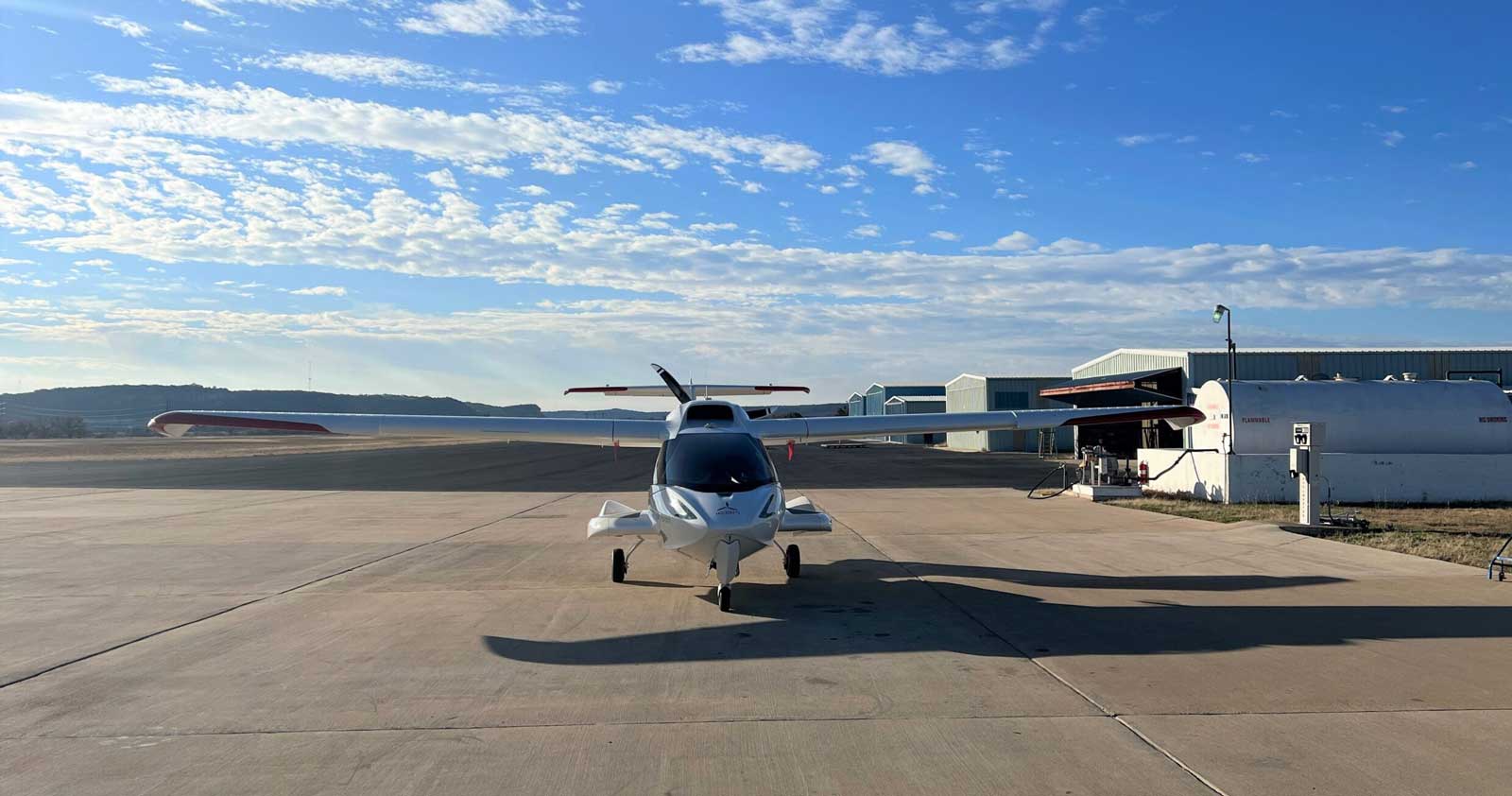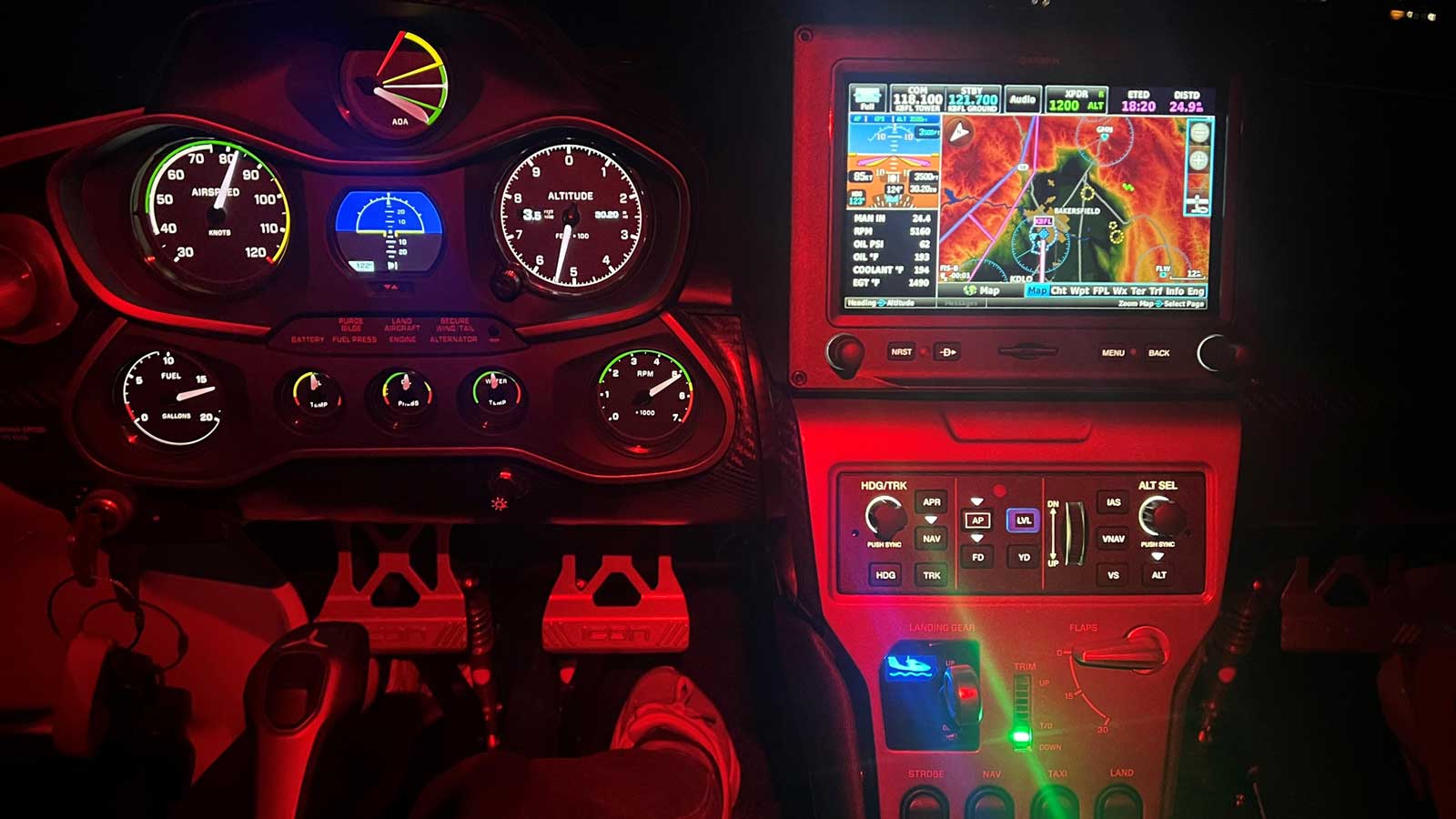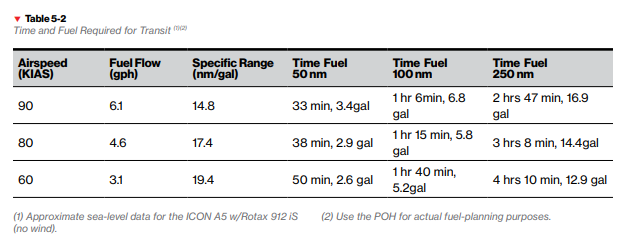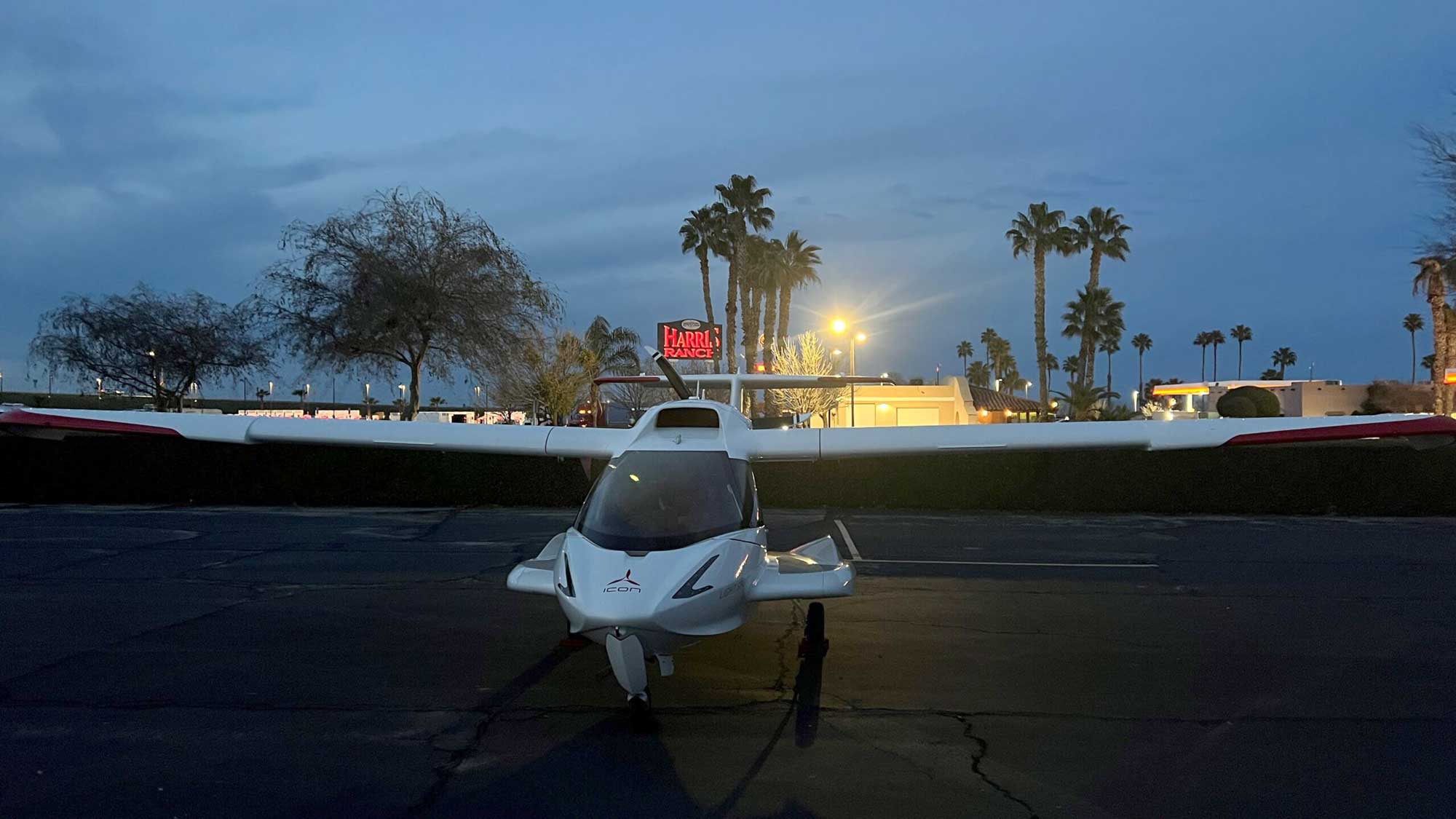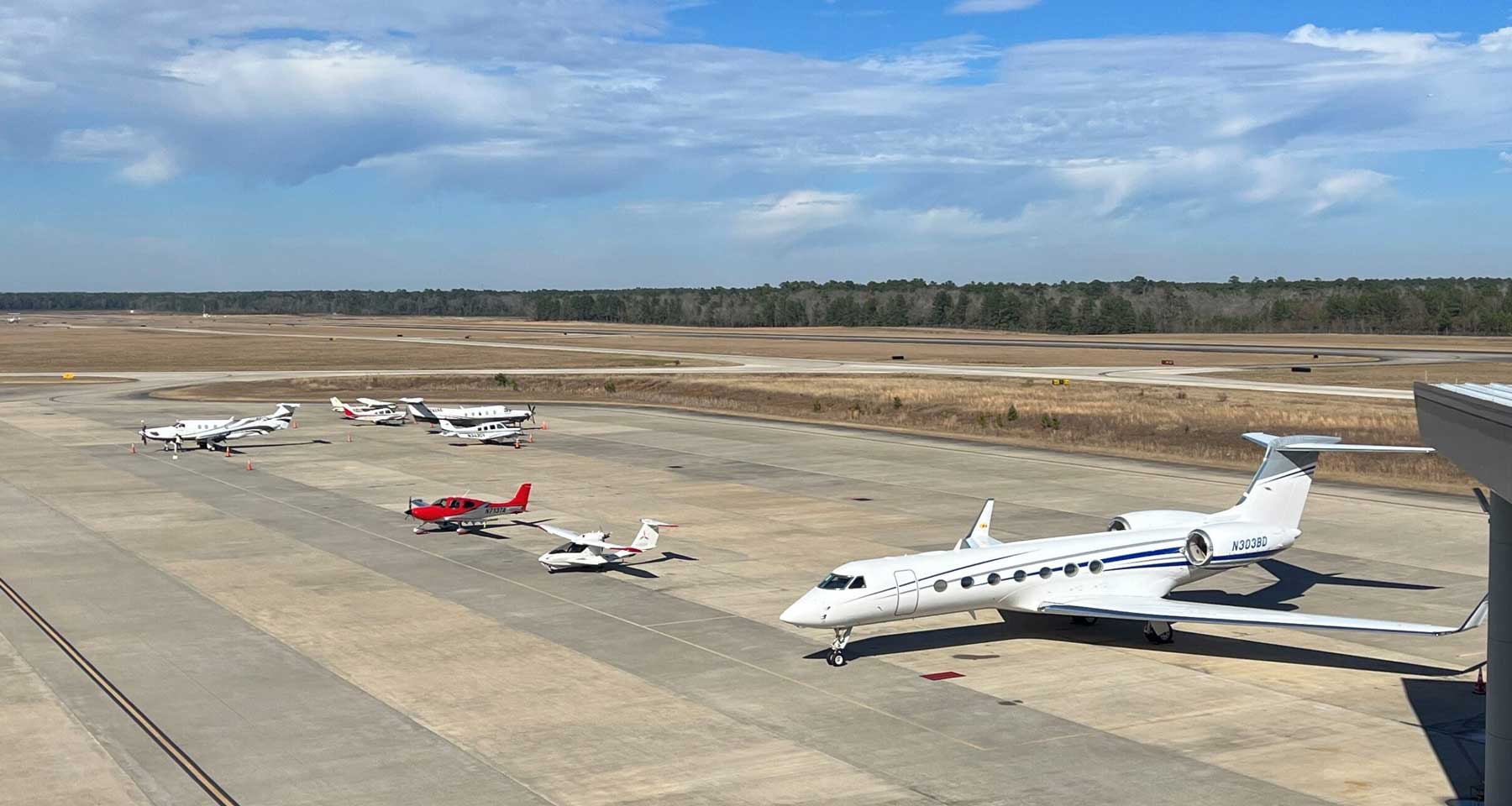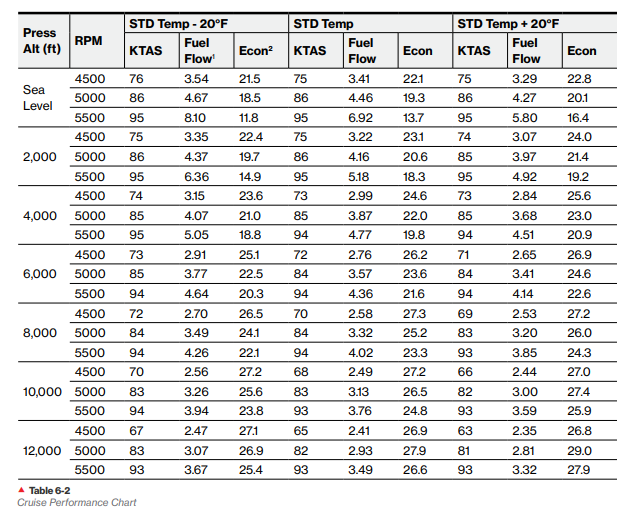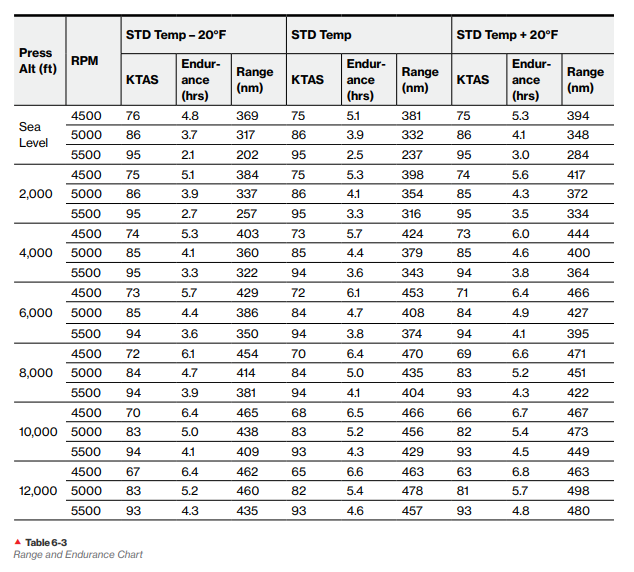On a recent ferry flight from Vacaville, CA to Tampa FL, I realized just how much cruise performance and the Rotax 912iS power settings impacted my fuel endurance in real time. The ICON A5 has a 20.1-gallon fuel tank, 20 gallons of which is usable fuel. The Rotax 912iS uniquely accepts 91 Octane (MOGAS) or 100LL (AV-Gas), with the ability to mix the two fuels.
The fuel warning light will illuminate and the fuel gauge will be “in the red” when the ICON A5 has less than 2 gallons of fuel remaining. Depending on your power settings, this could mean you have less than 30 minutes to get to a fuel stop. It’s easy enough to set a timer on the A5’s G3X Touch, or on your watch or cell phone, to calculate your exact fuel burn.
When discussing fuel management and fuel burn, it’s important to understand both fuel starvation and exhaustion. Exhaustion involves running out of fuel, which causes the engine to quit. Starvation, however, can occur when the aircraft runs out of usable fuel. This could result from using the wrong fuel type or contamination (e.g., water in the fuel tanks) which would cause the engine to become starved and also essentially quit. There may be fuel in the tank, but it is not suitable for that aircraft’s operation. In both instances, exhaustion and starvation primarily lead to the same result — an engine that can not generate sufficient energy for flight. The ICON POH and checklist advises pilots to sump the tanks before flight and after refueling to ensure the fuel is free of water, foreign materials, and is the appropriate color. Fuel in the ICON A5 should either be light blue (100LL), yellow (93 octane) or green if mixing the two.
With that said, this post focuses on avoiding fuel exhaustion. Understanding your fuel flow will allow you to safely calculate your fuel and time between cross-country legs, and is determined by aircraft range and endurance. Range encompasses your distance traveled, which is usually measured in nautical miles (NM). Endurance, however, deals with time, typically measured in minutes or hours. When traveling from point A to point B on a ferry flight, we typically care most about range.
“How much gas will it take to go that far, saving time opposed to fuel?”
On a ferry flight, I’ll typically fly quite a bit faster than the airspeeds corresponding to the best range and endurance. Because these speeds are slow, I’m usually willing to sacrifice some efficiency to reduce transit time. So in respects to ferrying an ICON A5, my desire is to spend less time in transit opposed to greater fuel efficiency. The typical cruise settings in the A5 are set by the tachometer at 5000 RPM to cruise at about 80 knots indicated airspeed (KIAS) which burns about 4 gallons per hour (gph). I’ll pick my cruise altitude based on the winds and how far I’m going.
Looking at the below chart, we can see that flying slower than 80 KIAS can save a little bit of fuel, but these savings are small and the time increase is significant. On the other hand, we can also cruise a bit faster, running the engine at higher RPMs, saving on time between points but increasing our fuel usage to where we will need to make additional fuel stops.
The Rotax 912iS sips fuel and is very efficient. If your intention is to fly the most fuel efficient profile, flying the white line on the AoA gauge results in the maximum range. The airspeed that corresponds to this AoA, as well as your actual range efficiency, will vary based on aircraft weight and density altitude, but it is typically about 60 KIAS in the A5. It will lengthen the time spent traveling a certain leg, but it will save you fuel while doing so.
Determining my fuel stops is a primary consideration throughout my cross-country flight planning. I try to plan my stops at airports with restaurants for a lunch break or hangar availability for overnight stays. I don’t want to get caught at an airport that is out of fuel or arrive to a lunch counter that closed an hour before my arrival. Below is an interesting place to stop for fresh BBQ, fuel, and even an overnight: Harris Ranch (3O8). There have tie-down parking right outside the restaurant and resort.
When it comes to cross-country flight planning, consider not only your destinations but what you’d like to do along the way. I like to stop more often for restroom breaks, to check out the features of a specific airport, take pictures, or to run around the airplane for exercise. I could choose to fly the whole 20-gallon tank of fuel in one leg (minus reserves), which at the typical power setting of 5000 RPM would give me about 4 hours of cruise flight and 400 NM, but that’s not my style. Because time is more important to me than fuel burn, I choose to run the Rotax 912iS at a slightly higher power setting of 5200 or 5300 RPM, which gets me closer to 90 KIAS in cruise flight. Because my stops are closer together, I get to each place sooner, but I do burn more fuel. On each stop, just after two hours of flight, I top off the fuel.
There was one leg in my journey from Scottsdale, Arizona to Austin, Texas where I planned my fuel burn to be about 5 gallons per hour at 5300 RPM. It turns out that I was burning closer to 6 or even 7 gallons per hour and I needed to plan another fuel stop before reaching my destination. This added fuel stop actually became my overnight destination, short of my intended Austin excursion.
For flight planning, there are cruise performance and endurance charts in the ICON A5 Operating Handbook with considerations for pressure altitude, outside air temperatures, and power settings. You’ll also have to factor in your route, airspace, and of course, winds aloft. A strong headwind will make it seem like the cars below on Route 66 are passing you by, while a nice tailwind goes a long way on fuel and time savings.
Looking at the cruise performance charts, you can see that the KTAS (knots true airspeed) and fuel flow increase with higher RPM in any give scenario. Increases in altitude also have an effect. While true airspeed (TAS) decreases, fuel flow and fuel economy are more efficient.
Looking at the endurance chart, you can see that endurance and range decrease as RPM are increased. Similar to the cruise performance chart, notice that endurance and range increase with altitude.
Per federal regulations (14 CFR 91.151), I want to land with fuel reserves of at least 30 minutes of flight time in day VFR and 45 minutes of fuel in night VFR. These are minimums. This is an important lesson to recall in your cross-country flight planning. Statistically running out of fuel is quite common among pilot errors and giving your minimums a fair amount of cushion is strongly advised. According to the NTSB, fuel mismanagement is one of the top ten leading causes of general aviation accidents in the U.S.
Hopefully, my experience from a recent trip helps highlight fuel endurance in more detail, and gives you more information for your own flight planning purposes in the future. My advice: Don’t hesitate to make changes to your plan in flight, explore more stops in your travels, and top off your fuel (and sump it) each time you stop.
